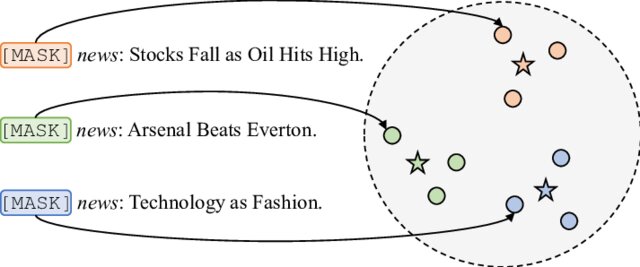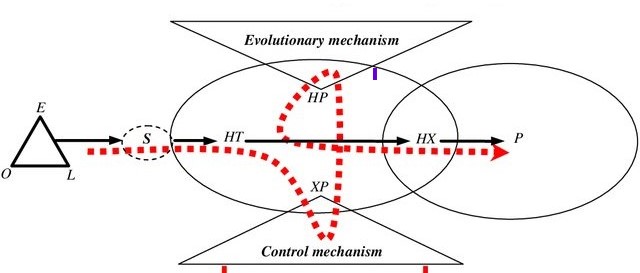Principal component analysis (PCA) and visualization using Python
What is PCA?
- PCA is a classical multivariate (unsupervised machine learning) statistical method that used to interpret the variation in high-dimensional interrelated dataset (dataset with a large number of variables)
- PCA reduces the high-dimensional interrelated data to low-dimension by linearly transforming the old variable into a new set of uncorrelated variables called principal component (PC) while retaining the most possible variation.
- The PCs are easy to visualize and summarise the feature of original high-dimensional datasets in low-dimensional space.
- PCA preserves the global data structure by forming well-separated clusters but can fail to preserve the similarities within the clusters.
- For example, when datasets contain 10 variables (10D), it is arduous to visualize them at the same time (you may have to do 45 pairwise comparisons to interpret dataset effectively). PCA transforms them into a new set of variables (PCs) with top PCs having the highest variation. PCs are ordered which means that the first few PCs (generally first 3 PCs but can be more) contribute most of the variance present in the the original high-dimensional dataset. These top first 2 or 3 PCs can be plotted easily and summarize and the features of all original 10 variables.
Perform PCA in Python
- we will use sklearn, seaborn, and bioinfokit (v0.9.8 or later) packages for PCA and visualization
- Check bioinfokit documentation for installation and documentation
- Download dataset for PCA (a subset of gene expression data associated with different conditions of fungal stress in cotton which is published in Bedre et al., 2015)
load dataset
# I am using interactive python console (Python 3.7.4)
>>> from sklearn.decomposition import PCA
>>> from sklearn.preprocessing import StandardScaler
>>> from bioinfokit.analys import get_data
>>> import numpy as np
>>> import pandas as pd
# load dataset as pandas dataframe
>>> df = get_data('gexp').data
>>> df.head()
A B C D E F
0 4.50570 3.260360 -1.249400 8.898070 8.059550 -0.842803
1 3.50856 1.660790 -1.856680 -2.573360 -1.373700 1.196000
2 4.44701 3.411940 -1.040870 10.271195 10.517256 0.272272
3 2.16003 3.146520 0.982809 9.024300 6.058320 -2.967420
4 2.35701 0.452589 -1.910680 12.984239 10.019605 -2.939020
# variables A to F denotes multiple conditions associated with fungal stress
# Read full paper https://journals.plos.org/plosone/article?id=10.1371/journal.pone.0138025
Standardization
- Standardization dataset with (mean=0, variance=1) scale is necessary as it removes the biases in the original variables. For example, when the data for each variable is collected on different units.
- The standardized variables will be unitless and have a similar variance.
- Standardization is an advisable method for data transformation when the variables in the original dataset have been measured on a significantly different scale.
- At some cases, the dataset needs not to be standardized as the original variation in the dataset is important (Gewers et al., 2018)
# this is an optional step
>>> df_st = StandardScaler().fit_transform(df)
# see few rows of standardized dataset
>>> pd.DataFrame(df_st, columns=df.columns).head()
A B C D E F
0 0.619654 0.448280 -0.240867 2.457058 2.304732 -0.331489
1 0.342286 -0.041499 -0.428652 -1.214732 -0.877151 0.474930
2 0.603329 0.494693 -0.176385 2.896569 3.133729 0.109563
3 -0.032825 0.413423 0.449383 2.497462 1.629707 -1.171850
4 0.021968 -0.411444 -0.445350 3.764964 2.965869 -1.160617
Perform PCA
>>> pca_out = PCA().fit(df_st)
# get the component variance
# Proportion of Variance (from PC1 to PC6)
>>> pca_out.explained_variance_ratio_
array([0.2978742 , 0.27481252, 0.23181442, 0.19291638, 0.00144353,
0.00113895])
# Cumulative proportion of variance (from PC1 to PC6)
>>> np.cumsum(pca_out.explained_variance_ratio_)
array([0.2978742 , 0.57268672, 0.80450114, 0.99741752, 0.99886105,
1. ])
# get component loadings (correlation coefficient between original variables and the component)
# the squared loadings within the PCs always sums to 1
>>> loadings = pca_out.components_
>>> num_pc = pca_out.n_features_
>>> pc_list = ["PC"+str(i) for i in list(range(1, num_pc+1))]
>>> loadings_df = pd.DataFrame.from_dict(dict(zip(pc_list, loadings)))
>>> loadings_df['variable'] = df.columns.values
>>> loadings_df = loadings_df.set_index('variable')
>>> loadings_df
PC1 PC2 PC3 PC4 PC5 PC6
variable
A -0.510898 0.452234 0.227356 -0.323464 0.614881 0.008372
B -0.085908 0.401197 0.708556 0.132788 -0.558448 -0.010616
C 0.477477 -0.100994 0.462437 0.487951 0.556605 0.007893
D 0.370318 0.611485 -0.308295 0.054973 -0.007642 0.625159
E 0.568491 0.300118 -0.011775 -0.484115 0.009382 -0.593425
F 0.208090 -0.400426 0.370440 -0.634234 -0.010111 0.506732
# positive and negative values in component loadings reflects the positive and negative correlation of the variables
# with then PCs.
# get correlation matrix plot for loadings
>>> import seaborn as sns
>>> import matplotlib.pyplot as plt
>>> ax = sns.heatmap(loadings_df, annot=True, cmap='Spectral')
>>> plt.show()
Generated correlation matrix plot for loadings,
Principal component (PC) retention
- As the number of PCs is equal to the number of original variables, We should keep only the PCs which explain the most variance (70-95%) to make the interpretation easier. More the PCs you include that explains most variation in the original data, better will be the PCA model. This is highly subjective and based on the user interpretation (Cangelosi et al., 2007).
- The eigenvalues for PCs can help to retain the number of PCs. Generally, PCs with eigenvalues > 1 contributes greater variance and should be retained for further analysis.
- Scree plot (for elbow test) is another graphical technique useful in PCs retention. We should keep the PCs where there is a sharp change in the slope of the line connecting adjacent PCs.
# get eigenvalues (from PC1 to PC6)
>>> pca_out.explained_variance_
array([1.78994905, 1.65136965, 1.39299071, 1.15924943, 0.0086743 ,
0.00684401])
# get scree plot (for scree or elbow test)
>>> from bioinfokit.visuz import cluster
>>> cluster.screeplot(obj=[pc_list, pca_out.explained_variance_ratio_])
# Scree plot will be saved in the same directory with name screeplot.png
Generated Scree plot,
PCA loadings plots
# get PCA loadings plots (2D and 3D)
# 2D
>>> cluster.pcaplot(x=loadings[0], y=loadings[1], labels=df.columns.values,
var1=round(pca_out.explained_variance_ratio_[0]*100, 2),
var2=round(pca_out.explained_variance_ratio_[1]*100, 2))
# 3D
>>> cluster.pcaplot(x=loadings[0], y=loadings[1], z=loadings[2], labels=df.columns.values,
var1=round(pca_out.explained_variance_ratio_[0]*100, 2), var2=round(pca_out.explained_variance_ratio_[1]*100, 2),
var3=round(pca_out.explained_variance_ratio_[2]*100, 2))
Generated 2D PCA loadings plot (2 PCs) plot,
Generated 3D PCA loadings plot (3 PCs) plot,
PCA biplot
- In biplot, the PC loadings and scores are plotted in a single figure
- biplots are useful to visualize the relationships between variables and observations
# get PC scores
>>> pca_scores = PCA().fit_transform(df_st)
# get 2D biplot
>>> cluster.biplot(cscore=pca_scores, loadings=loadings, labels=df.columns.values, var1=round(pca_out.explained_variance_ratio_[0]*100, 2),
var2=round(pca_out.explained_variance_ratio_[1]*100, 2))
# get 3D biplot
>>> cluster.biplot(cscore=pca_scores, loadings=loadings, labels=df.columns.values,
var1=round(pca_out.explained_variance_ratio_[0]*100, 2), var2=round(pca_out.explained_variance_ratio_[1]*100, 2),
var3=round(pca_out.explained_variance_ratio_[2]*100, 2))
Generated 2D biplot,
Generated 3D biplot,
In addition to these features, we can also control the label fontsize, figure size, resolution, figure format, and other many parameters for scree plot, loadings plot and biplot.
Check detailed usage
PCA interpretation
- The first three PCs (3D) contribute ~81% of the total variation in the dataset and have eigenvalues > 1, and thus provides a good approximation of the variation present in the original 6D dataset (see the cumulative proportion of variance and scree plot). The cut-off of cumulative 70% variation is common to retain the PCs for analysis (Jolliffe et al., 2016). Even though the first four PCs contribute ~99% and have eigenvalues > 1, it will be difficult to visualize them at once and needs to perform pairwise visualization.
- From the biplot and loadings plot, we can see the variables D and E are highly associated and forms cluster (gene expression response in D and E conditions are highly similar). Similarly, A and B are highly associated and forms another cluster (gene expression response in A and B conditions are highly similar but different from other clusters). If the variables are highly associated, the angle between the variable vectors should be as small as possible in the biplot.
- The length of PCs in biplot refers to the amount of variance contributed by the PCs. The longer the length of PC, the higher the variance contributed and well represented in space.
References
- Pedregosa F, Varoquaux G, Gramfort A, Michel V, Thirion B, Grisel O, Blondel M, Prettenhofer P, Weiss R, Dubourg V, Vanderplas J. Scikit-learn: Machine learning in Python. the Journal of machine Learning research. 2011 Nov 1;12:2825-30.
- Abdi H, Williams LJ. Principal component analysis. Wiley interdisciplinary reviews: computational statistics. 2010 Jul;2(4):433-59.
- Jolliffe IT, Cadima J. Principal component analysis: a review and recent developments. Philosophical Transactions of the Royal Society A: Mathematical, Physical and Engineering Sciences. 2016 Apr 13;374(2065):20150202.
- Gewers FL, Ferreira GR, de Arruda HF, Silva FN, Comin CH, Amancio DR, Costa LD. Principal component analysis: A natural approach to data exploration. arXiv preprint arXiv:1804.02502. 2018 Apr 7.
- Bedre R, Rajasekaran K, Mangu VR, Timm LE, Bhatnagar D, Baisakh N. Genome-wide transcriptome analysis of cotton (Gossypium hirsutum L.) identifies candidate gene signatures in response to aflatoxin producing fungus Aspergillus flavus. PLoS One. 2015;10(9).
- Kirkwood RN, Brandon SC, de Souza Moreira B, Deluzio KJ. Searching for stability as we age: the PCA-Biplot approach. International Journal of Statistics in Medical Research. 2013 Oct 1;2(4):255.
- Cangelosi R, Goriely A. Component retention in principal component analysis with application to cDNA microarray data. Biology direct. 2007 Dec 1;2(1):2.
- Vallejos CA. Exploring a world of a thousand dimensions. Nature Biotechnology. 2019 Dec;37(12):1423-4.
Last updated: September 26, 2020




